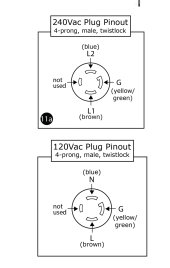The only way ‘neutral’ matters to a single phase device is as it relates to equipment grounding practices. If your generator neutral is bonded to ground and generator is actually grounded, and CV neutral is grounded to case, but when wiring your plug you switch things up and hook generator ‘line’ to CV ‘neutral’, then now your CV case is ‘hot’ and if you touch that and the ground (the kind you stand on) you might form a circuit good enough to be dangerous to you. So it’s really all about keeping your ground bond thing straight and has nothing to with ‘neutral’ as it refers to a connection to center-tap of a grid transformer.





